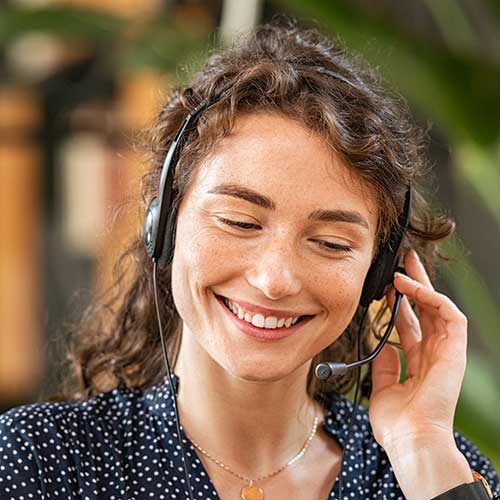What is a defibrillator?
The task of a defis is it natural heart rhythm In the case of a life -threatening cardiac arrhythmia, chamber fibrillation and other cardiological malfunctions Restoring using electric shocks.
How does a defibrillator work?
A defibrilator consists of a large battery, cables, wire, mostly adhesive pads and a computer. If a patient suffers a cardiac arrest, the computer can determine this if the pads are glued correctly and make them beat again with a strong electric shock.
Where is a defibrillator used?
- Hospitals, operating theaters and intensive care units
- Outpatient medical practices
- All forms of emergency services
- Facilities or event facilities for larger crowds (e.g. football stadiums, companies, train stations, universities, airports)
What types of defibrillators are there?
The defis are differentiated according to different types. In addition to the implantable defibrillators for people with severe cardiac arrhythmias and racing heart, there are Three classic variants.
- Automated external defibrillators (AED)
Automated external defibrillators (AEDs) are designed for use by laypersons.
The device gives the user via a language function or display precise instructions.
First, the user is asked to glue two electrodes on the patient. The device then measures the activity of the heart and accordingly indicates whether a shock is required.
With a semi-automatic AED Defi you have to press the shock button yourself. With a fully automatic defibrillator, the defi automatically carries out the shock. - Manual defibrillators
Manual devices are mainly used for rescue operations and by medically trained specialists.
With a manual defi, you can regulate the required amount of energy yourself. In addition, manual defibrillators have other additional functions, such as an ECG function. - Defibrillator vest (WCD)
A defibrillator vest (WCD = wearable cardioverter) is a special electrode belt, as an alternative to the implantable defibrillator in heart disease.
The patient carries the belt directly on the upper body for about three to four months. In the event of a dangerous cardiac arrhythmia, the device automatically initiates the treatment, even in the case of the patient's lack of consciousness.
How do you use a defibrillator?
- Free the patient's upper body: The defibrillator can only be applied to bare skin. The skin should be dry and hair -free. With strong breast hair you will usually find a razor in the emergency kit.
- Enter the electrode pads: Follow the instructions of the device -an electrode is attached to the right below the keybone and the other electrode on the left under the armpit.
- Do not touch the patient during the analysis: The defibrillator analyzes the patient's heart rhythm and recognizes whether it is shockable or not. You should not touch the patient during the analysis.
- Then follow the instructions that the device gives you: If it is a semi -automatic AED defibrillator, you will be asked to press the shock button in the event of chamber fibrillation. You can see the button on the flash symbol.
With a fully automatic AED, the shock is automatically handed over.
You are not allowed to touch the patient during the circulation! - Keep up to the instructions of the defibrillator: For example, he can ask you to continue the heart pressure massage.
What do you have to do when buying a defibrillator
regard?
Manual or semi -automatic AED defibrillator
If you are laypersons, you should be for a full or semi-automatic AED
Decide defibrillator. The defi independently analyzes whether a shock is necessary and then gives you precise instructions.
If you have medical training, you can also use a manual defibrillator.
IP protection class
Like all electrical devices, defibrillators are awarded a so-called IP protection class. The IP value consists of two numbers. The first number indicates the dirt and touch-proof of the device. The second number shows that the device can handle water well.
For example, a device with a value of IP11 is very sensitive to dust and water. A device with IP55 shows one High security over these environmental influences.
power supply
You have the choice between Batteries and rechargeable batteries. Battery is mainly recommended for professional use where frequent application is required. Depending on the manufacturer, the battery running times vary between five and nine years in standby mode.
Dimensions
A small device needs less space and is therefore easier to attach or set up so that it is always at hand. Our smallest defi is the defibrillator Schiller Fred Easyport with a measure of 133 mm x 126 mm x 35 mm.
You need this accessories for your defibrilator
battery and Battery pack:
If the battery or battery power of your defi slowly decreases, you will find the suitable battery or battery under Defibrillator accessories.
Defibrillation electrodes
for children: These electrodes have been developed somewhat smaller and especially for small children and children up to 8 years and 25 kg. You can find more children's electrodes at Defibrillator accessories.
Defibrillation electrodes
For adults: These electrodes are suitable for adults and children from 8 years and 25 kg. Further adult electrodes can be found at Defibrillator accessories.
Carry bag: A carrier bag supports the emergency insert and protects your defibrillator from dirt and damage. In our Shop Find the right carrier bag.
Wall bracket: We recommend a wall bracket to optimally accommodate the device. The metal wall bracket or plastic protects the defi from dirt and dust. In an emergency, the device can be easily removed. In our Shop do you think ...? Find
Wall brackets for your defi.




